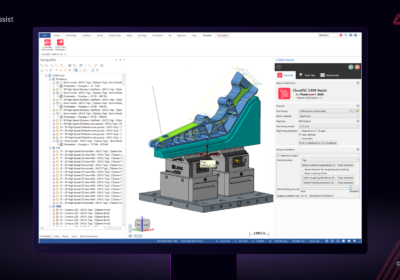~ The four steps to success when considering VO technology ~
Whether you’re looking to boost your company’s green credentials or simply cut costs, voltage optimisation (VO) can help by reducing electricity consumption by an average of eight per cent. Here, James Goodby, director of voltage optimisation specialist, Powerdown220, shares what he learned while managing the country’s largest ever VO project.
A hangover from the standardisation of grid voltages across Europe means that the UK Grid can provide electricity at a much higher voltage than strictly necessary. Standard electrical equipment is designed to receive 220V, but the UK supply averages 242V and can be as high as 253V. This means that most of us are using — and paying for — more electricity than we need.
Voltage optimisation (VO) technology tackles this inefficiency by acting as a voltage regulator, supplying only the exact amount your equipment needs. The result is an average reduction in electricity use by eight per cent. Supplying the correct voltage also reduces maintenance costs, because overvolted equipment suffers a reduced lifespan.
Investigate
Before deciding whether to invest in VO, you’ll need to know what return you can expect. Taking time to monitor a site’s power supply makes it possible to accurately calculate potential savings.
Passively monitoring your power supply with data loggers for four to six weeks is a non-intrusive way to build a detailed picture of voltage stability and load balance across all phases. This information is crucial for determining the exact amount of excess electricity your site is receiving and the potential cost savings, typically accurate to within one per cent.
With this data, a simple calculation reveals a VO system’s payback period, usually under 18 months. Furthermore, some providers offer guarantees that your savings will meet the calculated amount.
An added benefit of this careful monitoring is that once the technology is installed, it shouldn’t require any ongoing maintenance or adjustment. In my experience, only about one in ten sites need a subsequent visit to tweak the settings and maximise savings.

Eliminate
The eight per cent average mentioned earlier takes into account the fact that some types of equipment provide better savings with VO than others. For instance, LED lighting and variable speed drives don’t typically contribute significantly to savings, so should be excluded from calculations.
However, we’ve found that even when disregarding 50 to 70 per cent of the entire load on a site, it’s still possible to get savings of five to ten per cent. On top of that, VO will still make the equipment last longer and provide maintenance savings.
Integrate
It’s important to include any on site renewable energy systems when considering VO. People often say that wasting electricity doesn’t really matter if you generate it with renewables, because wind and sunlight are free. In reality, there’s still a tariff on renewable electricity: it’s kWh of electricity generated in the system’s lifetime divided by the cost of the system.
Combining VO with a system that generates electricity can help in two ways. First, it makes the electricity you generate go further by wasting less and improving efficiency. Second, if you are selling electricity to the grid, wasting less means you can sell more, improving ROI.
Coordinate
Meticulous logistics planning is key to a smooth installation process, particularly for VO rollout involving multiple sites. By carefully synchronising production schedules, delivery timetables and installation crews, each VO unit can often be installed within a tight 30-minute window, minimising disruption even for high-volume installations of ten to fifteen units per day. If you’re considering a project involving multiple sites, you might benefit from choosing a VO provider with experience managing large projects.
By cutting electricity use, voltage optimisation delivers both financial and environmental benefits. For Dale Fenton, energy manager at Mitchells & Butlers, who commissioned the UK’s largest VO project, the technology ‘‘ticked both boxes’’. If you’re wondering if VO could benefit your company, try our free voltage optimisation savings calculator at Powerdown220.co.uk.








